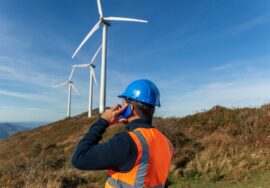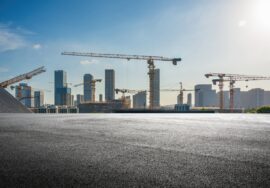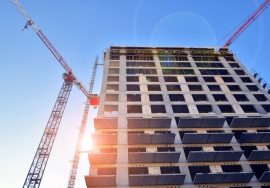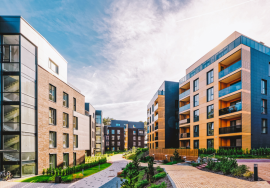Managing Environmental Risks in Construction Projects
Managing Environmental Risks in Construction Projects

Environmental risks in construction projects are a significant concern, as they can lead to costly delays, legal issues, and long-term damage to ecosystems. Properly managing these risks is essential not only for compliance with environmental regulations but also for promoting sustainable practices that benefit both the construction industry and the environment. This guide explores common environmental risks in construction and outlines strategies for effective management.
Understanding Environmental Risks in Construction
Environmental risks in construction refer to potential hazards that can impact the natural environment, including soil contamination, air and water pollution, waste management, and the disruption of local ecosystems. These risks can stem from construction activities, such as excavation, material use, and waste disposal, and can have far-reaching consequences if not adequately addressed.
Common Environmental Risks in Construction Projects
1. Soil Erosion and Sediment Control
Soil erosion is a common environmental risk in construction projects, particularly when large areas of land are cleared for building. Erosion can lead to sediment runoff, which can clog waterways, damage aquatic ecosystems, and degrade water quality.
Strategy: Implement erosion control measures, such as silt fences, sediment basins, and temporary vegetation, to prevent soil from washing away during construction. Regularly monitor the site for signs of erosion and adjust control measures as needed. Additionally, planning construction activities during drier seasons can minimize the risk of erosion caused by rainfall.
2. Water Pollution
Construction activities, such as the use of chemicals, fuel, and concrete, can lead to water contamination. Runoff from construction sites can carry pollutants into nearby water bodies, posing a risk to aquatic life and human health.
Strategy: Establish containment areas for hazardous materials and ensure that all spills are cleaned up immediately. Use biodegradable and environmentally friendly materials whenever possible, and install proper drainage systems to prevent contaminated water from leaving the site. A stormwater management plan can also help reduce the impact of construction on nearby water sources.
3. Air Pollution and Dust Control
Construction activities often generate dust and emissions, contributing to air pollution. Dust can harm the respiratory health of workers and nearby residents, while vehicle emissions and the use of heavy machinery contribute to greenhouse gas emissions.
Strategy: Implement dust control measures, such as water spraying, covering stockpiles, and limiting vehicle speeds on unpaved roads. For air pollution, regular maintenance of machinery and equipment can reduce emissions. Encourage the use of low-emission vehicles and equipment powered by renewable energy sources to minimize the construction project’s carbon footprint.
4. Waste Management
Construction generates significant amounts of waste, including materials such as concrete, wood, and metal. Improper waste disposal can lead to environmental contamination and legal issues related to non-compliance with waste disposal regulations.
Strategy: Develop a waste management plan that includes recycling and reusing materials wherever possible. Segregate waste on-site for easier recycling, and partner with local recycling facilities to divert waste from landfills. Additionally, carefully planning material orders can reduce the amount of waste generated during the project.
5. Biodiversity and Habitat Disruption
Construction projects can disrupt local ecosystems, displacing wildlife and damaging habitats. This is particularly important in areas near protected lands or water bodies where endangered species might be affected.
Strategy: Conduct a thorough environmental impact assessment (EIA) before starting construction to identify potential risks to local wildlife and ecosystems. Use barriers to prevent wildlife from entering construction zones and create wildlife corridors to allow safe passage. Additionally, consider offsetting environmental impacts by restoring or protecting other habitats.
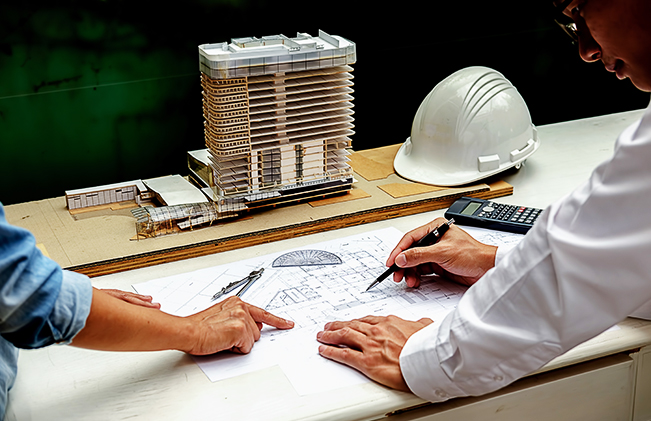
Design-and-Build-Service
6. Noise Pollution
Excessive noise from construction activities can disturb local communities and wildlife, leading to complaints and potential legal action. Noise pollution is a significant environmental risk, especially in urban areas where construction sites are near residential buildings.
Strategy: Limit noisy activities to certain times of the day to minimize disturbance, and use noise barriers or soundproofing techniques around the construction site. Where possible, use quieter machinery and regularly maintain equipment to ensure it operates efficiently and quietly. Engaging with the local community and informing them of potential disruptions can also help ease tensions.
7. Hazardous Materials Handling
Many construction projects involve the use of hazardous materials, such as asbestos, lead, and solvents, which can pose environmental and health risks if not handled properly.
Strategy: Implement strict protocols for the handling, storage, and disposal of hazardous materials. Train workers on the safe handling of these substances and ensure that personal protective equipment (PPE) is used. Regular inspections and audits can help identify any potential issues before they escalate into larger problems.
8. Greenhouse Gas Emissions
The construction industry is a significant contributor to greenhouse gas emissions, primarily due to the use of heavy machinery, transportation of materials, and energy consumption on-site.
Strategy: To reduce emissions, consider using energy-efficient machinery and renewable energy sources, such as solar or wind power, on construction sites. Additionally, sourcing local materials can reduce transportation emissions, and using sustainable building materials can help lower the overall carbon footprint of the project.
Strategies for Managing Environmental Risks
1. Conducting Environmental Assessments
Before starting any construction project, conducting a comprehensive Environmental Impact Assessment (EIA) helps identify potential environmental risks and their impact on the local ecosystem. These assessments allow project managers to develop mitigation strategies and ensure compliance with environmental regulations.
2. Compliance with Environmental Regulations
Ensuring that construction projects comply with local, national, and international environmental regulations is essential. This includes obtaining necessary permits, adhering to waste disposal regulations, and meeting air and water quality standards. Regular audits and inspections help keep the project on track and avoid fines or project delays.
3. Sustainable Construction Practices
Incorporating sustainable construction practices can significantly reduce the environmental impact of a project. This includes using eco-friendly materials, reducing waste, and implementing energy-efficient building techniques. Green certifications, such as LEED (Leadership in Energy and Environmental Design), can provide guidelines for sustainability.
Conclusion
Managing environmental risks in construction projects is a crucial part of ensuring both regulatory compliance and long-term environmental sustainability. By proactively addressing common risks such as soil erosion, water pollution, and hazardous materials handling, construction projects can minimize their impact on the environment and contribute to more sustainable development. Implementing robust risk management strategies, including thorough planning, regular monitoring, and compliance with environmental regulations, is key to achieving successful outcomes in environmentally responsible construction projects.
For more information on managing environmental risks, contact us to learn how we can help.
External Resources for Legal Guidance
Managing Environmental Risks in Construction Projects
Read more related articles to enhance your knowledge and make informed decisions
10 Essential Steps in the Building Construction Process
How to Choose the Right Materials for Your Construction Project

